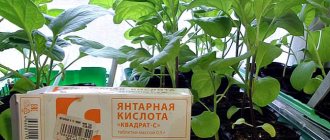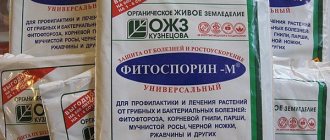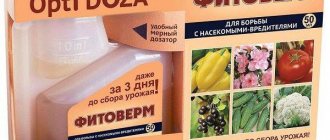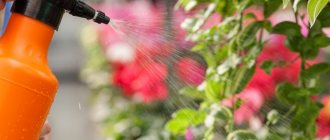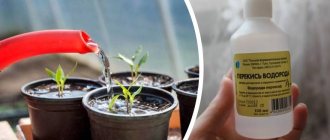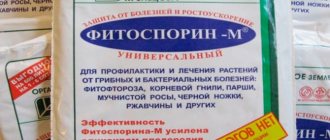To maintain a beautiful, lushly flowering garden or fruitful vegetable garden, gardeners use many types of organic and chemical fertilizers. You can buy the product at any agricultural produce store. But there are plants that require no less love and care. In the same way, owners of indoor flower beds want to have beautiful, green plants in pots.
Succinic acid is suitable for this. The product is gaining popularity and winning the hearts of flower growers with its magical art of quickly restoring decorative plantings. Reviews from people who use the fertilizer with such an interesting name in practice are positive. Because the substance is safe and effective.
Characteristics and composition
Succinic acid is not sold in stores selling agricultural products. It is purchased at a pharmacy. The release form is different, but the chemical name is the same - butadienic acid.
The substance is used in practice as a medicinal form to restore the immune and nervous systems, filling them with energy. Has various areas of application. Doctors recommend using it for:
- improving brain function;
- to increase attention and concentration;
- strengthening reflexes;
- relieving stress from the body and nervous system.
The formula of succinic acid is designed in such a way as to relieve inflammatory processes and prevent the appearance of tumors, restore blood circulation and veins.
In a similar way, amber helps plants recover. The immune system is imbued, which means photosynthesis improves. It will help improve the condition of not only indoor plants, but also in the country.
Succinic acid is not a chemical substance, but an organic one. You can find it in cheeses, gooseberries and grapes. Sauerkraut has become a storehouse of this substance. Naturally, amber itself is the main source material for acid.
Modern science manages to obtain the composition of succinic acid using the formula of n-butane and benzene. By combining the two components, crystals are obtained and then ground into powder (white color). Taste: sourish taste. At the same time, the crystals dissolve well in water.
Auxiliary components are:
- potato starch and talc;
- aerosil and sugar;
- ascorbic acid and calcium stearate.
Composition and form of fertilizer
Many amateur gardeners are interested in the question of how fertilizers for flowering crops differ from others. Such preparations are designed to encourage the appearance of inflorescences. Fertilizers for abundant flowering mainly contain phosphorus and potassium. Nitrogen is contained in minimal quantities.
When buying packages with mineral complexes, you can find the NPK designation on them. It is she who determines the purpose of the drug, indicating the percentage composition of the above-described elements.
Plants need potassium for photosynthesis, proper vegetation, and resistance to the adverse effects of surrounding microflora. Phosphorus is the basis of energy. It controls metabolic processes within the plant and is responsible for its very reproduction. Phosphorus is especially important during the formation of buds, inflorescences, and seed ripening.
Fertilizer properties
The chemical properties of amber are clearly beneficial for the treatment of human ailments. In practice, the medicine began to bring positive reviews in gardening and when propagating indoor plants.
Succinic acid becomes a growth stimulator for plants. Purchased in the form of tablets or injection liquid, diluted in water and used for spraying or watering. The positive aspects of processing are:
| Benefit | Specifics |
| Sustainability | A plant treated with acid, even in small quantities, is not afraid of frost, humidity or drought. Gains increased stability and protection |
| Root formation | If necessary, replanting the plant and stopping the roots becomes an indispensable tool. Helps to revive, propagate and replant without problems |
| Chlorophyll | This substance is produced twice. Due to this, flowers and garden crops acquire improved color and are filled with vital energy. |
| Stimulant | When plants are treated with amber, the root system improves and absorbs added bioadditives from the soil faster. Growth accelerates and appearance improves |
| Destruction of toxins | Toxins and other negative substances always accumulate in the soil. But when treated with succinic acid, toxic elements dissolve |
| Increased adaptability | If the flower is sick, then using amber is simply necessary. It will help the plant’s immunity to protect itself from negative bacteria, microbes, and fungi. In addition, it will recover faster after an illness. |
| Microflora | After treatment, the activity of positively charged particles is balanced, which clearly improves the quality of soil microflora |
Succinic acid: description, indications for use for plants
Succinic acid is an organic substance. Contained in living and in some types of inorganic organisms - in amber, coal, maleic anhedride, from which it is extracted on an industrial scale.
The scope of application of succinic acid is quite wide. The substance is used in the food, chemical industry, medicine and agriculture, where it is used as a supplement to basic fertilizers.
What happens to plants after treatment with succinic acid:
- immunity is strengthened, growth is stimulated;
- flowering and fruit ripening are accelerated;
- there is a noticeable development of the root system;
- quick adaptation after transplantation;
- the composition of beneficial microflora in the soil is normalized;
- resistance to diseases and pests increases.
The effectiveness of succinic acid has been scientifically proven and tested by experimental methods. For this reason, fertilizer manufacturers often include the substance in mineral and organic complexes.
Pros and cons of using
The effect of acid on a plant is more like a growth stimulator. At the same time, using the medicine as a fertilizer has additional advantages:
- Stabilizes soil microflora and helps plants resist diseases.
- The stimulating effect of succinic acid does not end there. The growth stimulator improves the plant's immunity and prevents fungal and bacterial infections from damaging green spaces.
- Reduces stress factors: pressure surges, temperature problems, drought or high humidity, lack of lighting.
Indoor flowers suffer the most from stressful situations. The soil in pots changes and is associated with human actions that are unpleasant for the plant. The roots are always damaged and exposed when transplanted.
It's difficult to experience so much at once. The plant experiences particular challenges during periods of drought or rainy weeks. Humidity and dryness of the air also greatly hinder the “green inhabitants” from growing and looking healthy.
The benefits and harms of succinic acid in the analysis are huge among the negative aspects: increasing the dose leads to unpleasant consequences. The plant should not be over-fertilized. But if it is necessary to combat chlorophyll, succinic acid becomes an emergency aid.
Advantages and disadvantages of application
To answer the question whether it is still worth feeding plants with succinic acid or, nevertheless, choosing more serious fertilizers, you should consider all the pros and cons of using this substance when growing plants.
Arguments for":
- acid strengthens plant immunity;
- promotes rapid growth of green mass;
- accelerates germination and germination of seeds;
- hardens, plants become less sensitive to adverse weather conditions;
- improves the composition and quality of the soil.
Due to its absolute safety for the environment, succinic acid does not have any serious disadvantages. The only thing that can be noted is a milder effect with other stimulants. Otherwise, the substance has only positive qualities. It is for this reason that flower growers and gardeners systematically resort to the use of succinic acid in agriculture.
Even a one-time use of acid gives good results, but usually the treatment is carried out in a course of several procedures, which is much more effective. The drug can be purchased at a regular pharmacy (sold without a prescription) or at a specialized flower shop. The drug is not used for prophylactic purposes.
Release form and production features
Butadienic acid is sold in pharmacy kiosks as a medicine. Amber water is prepared independently at home using a purchased pharmaceutical preparation.
Sold as an injection liquid in ampoules, tablets or powder form. All forms that are commercially available are suitable as fertilizer.
The tablets are amber or in powder, but the succinic acid is compacted and dry. It dissolves well in water, which allows you to quickly prepare liquid for feeding. The ampoule product is popular. Since it is enough to add it to water and stir for less than a minute. All. The product is ready without much effort.
Regardless of the type (tablets, ampoules, powder), the composition is the same, only the dosage of the main components is slightly changed. Therefore, before starting watering, you need to clarify the recipe and method of diluting the drug.
TOP-5 best fertilizers for indoor plants
There are several ways to feed your plants to ensure they thrive in the conditions you provide. It is also necessary to take into account the individual requirements of the plant in order to understand how much fertilizer it needs and how often. It is imperative to ensure that the flower receives all components: phosphorus, potassium (helps resist viruses and diseases), calcium (which serves as a nutrient), magnesium (supplier of chlorophyll and takes part in the process of photosynthesis), sulfur (provides the system with protein), iron and chlorine.
The effect of fertilizer on soil and plants
Amber fertilizer is an excellent tool for destroying bacteria and restoring the plant with the necessary microelements. Acid is suitable in various situations that arise in a country house or garden, or in an apartment.
If the effect of succinic acid on houseplants is quite clear - stress relief, restoration of immunity.
This begs the question: can it be used as a fertilizer for cucumbers, tomatoes or other vegetable crops? To understand this, it is worth studying in detail why and how you can use the drug.
It is suggested to use amber water from the stage of plant development: seeds. Treatment is carried out before direct sowing. To do this, prepare a 0.2% solution (dissolve 2 mg or one tablet in 1 liter of water), soak the seeds.
What methods are applicable for home flowering plants?
Now in more detail about how you can use succinic acid for home flowers:
- Watering
. A bucket of water will require 10 tablets. by 0.1. Water once every six months if the plants develop normally. For weakened ones, watering can be increased so that new shoots grow more actively and the roots receive nutrition. All this will strengthen the weakened flower and stimulate the appearance of new buds. - Fertilizer application
. Young plants are sprayed on the leaves once every 30 days. During transplantation, dry and rotting roots are removed. To strengthen the root system, soak it for 3 hours. - Spraying
. When the flowers are dull and weak, spraying is also very good. At the same time, it is carried out every day to get the effect faster. Continue spraying until the above-ground part of the plant is completely restored. The procedure during the formation of ovaries promotes lush flowering. - Immersion
. When a flower has been attacked by harmful insects or grows in an unfavorable environment, which has greatly affected it, immersion in the composition for a quarter of an hour will help to rehabilitate the plant. If there are no results after 14 days, you should repeat the procedure.
Succinic acid for orchids
When else can a solution be useful:
- when the seeds have been lying around for a very long time and may even have expired;
- with a sluggish process of root formation;
- for better survival rate during reproduction.
Attention!
If you suddenly purchased pills at the pharmacy and it turned out to be a dietary supplement, you need to remove the excess substances, because the desired effect simply will not happen. To do this, the tablets are placed in a nylon bag and immersed in hot water. All unnecessary substances will settle to the bottom.
Succinic acid against stress
When house plants begin to wither, dry out, and find it difficult to adapt, it is time to feed them with 0.2% amber. The frequency of feeding is once every 14–21 days.
Features of use for indoor plants
Home floriculture is much more complicated than it seems at first glance. In apartment conditions, where there is less fresh air, there are much more stressful situations for plants.
The destruction of bacteria, fungus and other diseases is more difficult. To strengthen the immunity of the indoor “dweller” and speed up the growing season, it is amber liquid that is recommended.
For indoor flowers, succinic acid is especially necessary when there is overheating or excessive humidity. It is always difficult to choose feeding and fertilizer for the “delicate creatures of the window sill”. But amber compensates for the lack of vitamins and nutrients in the soil.
If a person is a happy owner of tropical plants (for example, orchids), it is worth remembering the need for special treatment and care for flowers. Feeding orchids with succinic acid will help improve health and activate photosynthesis. It will also stimulate the formation of flower stalks.
This plant often suffers from rotting roots. Productive treatment and stress relief can be carried out with a weak solution. To do this, you will need to dilute the orchid tablet in 5 liters of warm water.
This solution is recommended for frequent use. Spray once every 21 days. As soon as the product runs out, the remains are poured into the soil. Systematic application allows you to protect orchids from diseases, rot and other negative aspects.
If a florist is passionate about roses, use acid like street pink beauties. The only thing worth remembering is that rose flower beds at home are more delicate. Spraying is allowed once a month, and application to the soil once every 2 months.
Succinic acid for garden plants
The substance acts on plants grown in open ground in the same way as on indoor flowers - as a powerful stimulator of growth and development. Treatment methods are divided into spraying, watering and soaking. Let's consider fertilizing using the example of several garden crops.
Roses
For spraying and watering roses, a 0.02% solution is prepared. It is advisable to spray during the budding period. Watering at the root can be done 1-2 times a month. If the roses are noticeably weakened, you can do this up to 3 times, but not more often, so as not to achieve the opposite effect and not to deplete the plant with excessive stimulation.
A good result is obtained by soaking the cuttings in a solution of 0.1% for 12 hours. It is advisable to do this early in the morning so that the landing can be carried out in the evening.
Fruit trees
Succinic acid is considered one of the best means used to increase the productivity of fruit trees.
Treatment is carried out by spraying during the flowering period of trees and shrubs. To prepare a solution, dilute 0.2 g of pure substance in 5 liters of water. The amount of this solution should be enough to treat 130 m² of garden area.
Coniferous trees
For coniferous plants, succinic acid is used as a stimulant, and less often, as an adjuvant in combination with fungicides and insecticides in the treatment of infectious diseases and pest control. Processing of conifers is carried out by spraying, less often by watering.
Grape
Succinic acid has a mild stimulating effect on grapes and promotes fruit formation. Treatment is carried out by spraying with an aqueous solution of 0.01%. Experienced winegrowers in the spring, during the period of swelling of the buds, recommend spraying with a solution of 0.1%. The procedure helps to enlarge the ovaries and increases the resistance of the bushes to return frosts.
Operating instructions
There are no instructions for using succinic acid for plants. And it is impossible to see it in a box of pills or powder. Standard dilution is to add 0.1 g of powder (tablet) to warm water.
In tablet form it can be 0.25 g. In this case, you need to add 4 tablets at once. The moment of direct use is taken into account: to improve flowering, as flower food or as medicine.
Dosage
The dosage of succinic acid depends on the direction of application. But the drug has an effect even at low doses. Weak solutions are prepared at the rate of 1 tablet per 1 liter. Suitable for wiping the green part to improve photosynthesis, for treating sensitive plants.
TOP 5 best fertilizers for indoor plants
Even in big cities and living in a small apartment, you want to surround yourself with the beauty of nature, so the best solution would be to put a couple of beautiful flowers that will delight you every day. But even one plant needs real care and attention, all this is the price to pay for the joy they bring you. So the soil of a home flower also requires fertilizer for the plant to feel good. After all, any flower is also a living creature that will be your friend, and you should try to provide it with the most comfortable conditions. And besides watering, the soil for the flower will be the most important source. It is imperative to add fertilizer to the soil; this procedure is necessary for any variety of house plants.
Fertilizer for indoor flowers
You need to understand that houseplants, even though they are specially bred, still require higher frequency of fertilization. This is because when you plant them in a pot, you limit them to a certain amount of feeding area. Garden crops in the food space are not so limited and feel less constrained. So indoor plants need fertilizer and feeding. Otherwise, your flower will get sick and feel unwell, which will lead to its slow decline. You can tell when your plant needs feeding based on its symptoms. If you notice that the plant does not bloom or grows slowly, or its stem is very weak, then the problem is precisely in fertilizers. In order for it to feel the power, you need to add it to the ground. Also, the foliage of the flower may turn yellow, buds may not appear at all, and eventually the leaves will begin to fall off; try to prevent this under no circumstances.
Plant treatment methods
It is recommended to use the amber liquid in several ways. They are also suitable for floriculture and gardening. The most common methods are watering and spraying. But amber will also be useful for:
- wiping the green part;
- soaking the roots before planting or between the process of replanting into another pot.
Soak
Succinic acid for seeds, seedlings, cuttings, tubers, root systems should be prepared in low concentration. If it is necessary to quickly obtain results, the solution is mixed for 2 days at the rate of 0.4 g per 1 liter.
No matter how the soaking occurs, after it the planting material is dried and then planted in the soil . If germination began during soaking, planting occurs immediately.
In the garden, succinic acid has the same application as in floriculture.
Spraying
The use of succinic acid for seedlings makes it possible to fill the young plant with energy and strengthen the immune system. The spray liquid works as a growth stimulator for plants.
The method involves processing the biomaterial in the morning or after sunset. Avoid exposure to sunlight during spraying, as you can burn the leaves, stems and shoots.
The procedure is done either with a weak solution (the flower is healthy, but requires a little life-giving moisture), or the solution is mixed with 0.03%. The exception was grapes. The vine is treated with a 0.08% solution of succinic acid.
Watering
Watering flowers with succinic acid in gardening and floriculture is a restorative procedure. A standard mixture is used: 1:1 powder and water. Carry out the procedure, both at the dacha and in the apartment, no more than once every three weeks. To achieve the best effect, it is recommended to combine watering and spraying, but with different solutions.
Instructions for using succinic acid in the garden
The use of succinic acid is very extensive in gardening and vegetable gardening. First of all, its use should always be justified. Solutions of the product should be used only when no other measures allow seedlings or the plant as a whole to develop well. Fertile soil has a good stimulating effect; organic substances also contain stimulating substances to one degree or another.
Soaking seeds before sowing
A 0.004% solution is used to soak the seeds. To do this, 40 ml of a 1% solution is poured into a jar and the volume is adjusted to 1 liter. The seeds are soaked directly in the solution, or in a cloth soaked in the same solution, kept for no more than a day, then the seeds are dried and they are ready for sowing.
Aged seeds germinate quickly and amicably, the seedlings are strong, develop well, and practically do not get sick.
Spraying plants
To spray leaves in early spring in order to increase resistance to return spring frosts, use a 0.01% solution. And with a stronger 0.02% solution, spray it 2 more times, but only before flowering and after the plants have flowered. These sprays are aimed at increasing immunity and increasing resistance to endure adverse conditions and possible diseases.
You can spray any vegetable crops, fruit trees, shrubs, grapevines and garden flowers.
Stimulating the growth of cuttings
For cuttings and better rooting, the cuttings are soaked in a 0.01-0.02% solution for 10-15 hours, then planted in the ground in a permanent place. Such cuttings quickly form new roots and take root well.
To speed up germination
In order for potatoes to germinate faster after planting, a 0.04% solution of succinic acid is used. To do this, spray the potato tubers and keep under the film until the solution dries completely on the surface of the tubers.
When replanting plants
When replanting seedlings of fruit trees and shrubs, as well as flowers, place their roots in 0.02% succinic acid for several hours, and then plant them in a hole in a permanent place. This will speed up the healing period of wounds on the roots, and the plant will better take root in its new location.
Precautionary measures
In practice, it has been proven that an overdose does not cause harm. Succinic acid is present in 65% of plants. But the biomaterial should be diluted according to the instructions. Especially when it comes to irrigation. A strong solution can cause a burn to the green part.
For humans and animals, amber is not toxic or harmful. Therefore, you can carry out any manipulations without gloves or a respirator. It is worth remembering that you must avoid getting acid on the mucous membrane. An acidic environment promotes inflammation and vision problems.
Fertilizer application timing
Sometimes gardeners think that a plant needs fertilizing only at the moment of rapid flowering. This formulation is not true. The period of bud formation is accompanied by flowering. Both the formation of inflorescences and flowering are the phase when the plant expends maximum energy. Therefore, you need to add nutrients to your pets in both periods.
More often, houseplants form buds and also bloom from spring to autumn. During this period, crops require feeding with minerals.
There are also exceptions among representatives of indoor fauna. Let's say that azalea forms flower stalks in the fall and blooms in winter, so you need to fertilize the crop with the arrival of cold weather.
How to properly water flowers with succinic acid for their health and beauty
Succinic acid is an inexpensive natural substance that is very useful for both garden and household plants. It is not a fertilizer as such, but only complements it. The purpose of this product is to normalize the soil microflora and help flowers absorb essential minerals. This drug is suitable for absolutely all representatives of fauna. A bright effect is achieved both as a result of watering and spraying plants.
Methods of application
There are different ways to use succinic acid. They water and spray the plants with it, wipe their leaves using a cotton swab, and soak the cuttings and seeds. However, it should not be used too often.
When processing seeds before sowing, select fresh seeds, placing them in a shaded place.
To stimulate rooting processes, you can use special plastic trays.
Some plants are so susceptible to touch that they have to be treated with the smallest sprayer. To make the crops more easily tolerate the treatment, this must be done at night.
As for working with roots, before soaking for rooting you have to wash and trim them. You can treat plants if they are overly moistened or overheated. However, in each case it is necessary to take into account the characteristics of the flower itself. All plants are individual: what is good for one of them is not always suitable for another.
Watering
You can water the plants with a solution of succinic acid no more than 2 times a month. Other types of plants can be fertilized no more than once every 3-4 years, since frequent treatment can lead to the opposite effect. Cacti are treated only once.
Succinic acid must be used correctly. It is necessary to water plants with the diluted preparation immediately after transferring them to a new pot, and also as an emergency aid for chlorosis. However, it is important to note that pubescent plants (for example, gloxinias, violets) must be watered at the root. In winter, watering is not carried out; at this time, plants can be treated by spraying or wiping the leaf plates.
Spraying
Spraying is done to speed up the delivery of nutrients through the mouths of the lower parts of the plant. To do this, use a filtered solution of the drug. The procedure is used in early spring to bring plants out of winter dormancy and stimulate vegetation. In addition, spraying is carried out for:
- awakening to the growth of lateral buds after circumcision;
- treating plants against pests;
- prevention of past diseases.
Basic properties
Succinic acid has the following beneficial properties:
- participates in stimulating and regulating plant growth;
- increases chlorophyll synthesis in foliage;
- promotes the absorption of applied fertilizers;
- participates in the formation of a protective layer that prevents the negative effects of toxins and excess accumulation of nitrogenous substances;
- improves soil microflora;
- increases the vitality of plants when exposed to unfavorable factors;
- reduces the risk of plant diseases.
Let us next consider how to dilute succinic acid.
Precautions when working with succinic acid
The drug is not toxic to living beings or the environment. However, it is unlikely that your eyes or skin will respond with gratitude if such a product comes into contact with them. First aid in both cases is rinsing with water. If it gets into the stomach, there should be no concern; this remedy is used internally as an antiviral and antibacterial. The skin can be lubricated after washing with any anti-inflammatory cream. It is not recommended to use powder that is more than three years old. For safety reasons, it is best to work with gloves and follow the dosage.
